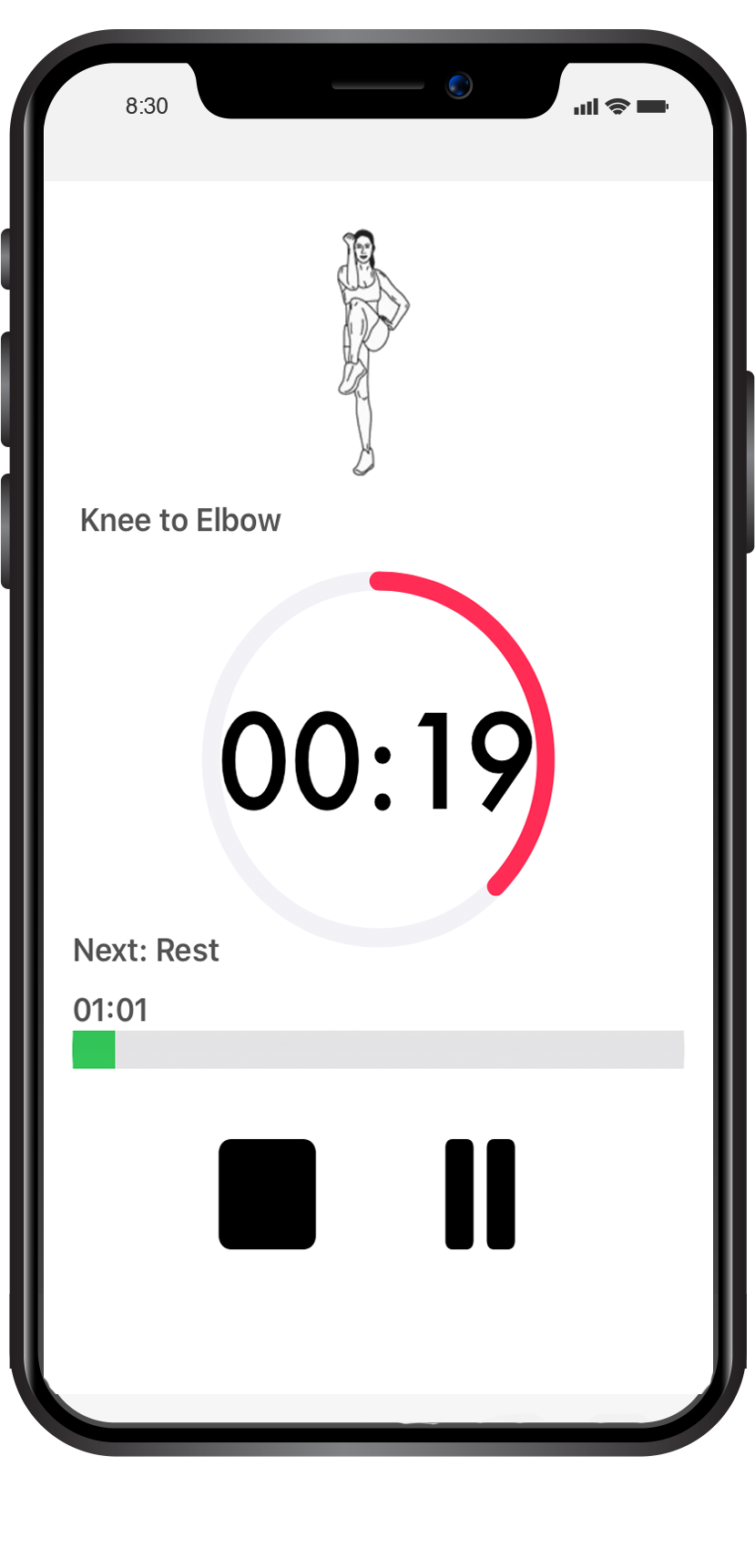Mobile push notifications are a common means to send messages from a mobile application to the user’s device. These messages can have different purposes and may be received at any time of the day in different modalities on a smart device. In this work, we seek to answer how to make the most of push notifications in fitness and health applications, while avoiding negative reactions. After an exploratory survey on push notifications, we designed and developed an iOS fitness application with the ability to send daily context-aware notifications based on: (1) a user’s location, (2) current activity and (3) at a pre-defined time. The fitness app utilizes reminders with the purpose of motivating users to do their daily workouts. A small preliminary user study showed that even though reminder notifications can help to direct users’ attention to doing a workout, the user does not necessarily follow through with the workout.



Frame vector created by freepik – www.freepik.com
5 mins workout application
The implemented workout application was built for iOS devices. 5 mins consists of 4 sections for total body, upper body, lower body and abs workout. The app is made to look and feel similar to two of the most downloaded fitness apps available in the App Store: 7 Minute Workout: Fitness App (8.4k download and 4.7 stars) and Workout for Women (31k downloads and 4.7 starts). Users can customize each fitness routine and add or remove the workouts that they prefer. All of the workouts are inspired by DAREBEE workout routines, a free global fitness resource. A tutorial video for each workout is also provided.
The first time the user opens the app, the user is asked to give the app permission to send notifications and track the user’s location. After giving the authorization, it will set three types of default notifications, based on the results gathered from our survey. The first type is scheduled for a specific time that is set by the user. By default, this time is set to 8:00 A.M., which is compatible with the second most popular choice from the questionnaire: “In the morning, before I start my day”. Further, if the user has not been active enough the day before, the content of these notifications will be more encouraging the next day, e.g. “Today is a new day!”.
The second type of notification is based on the user’s location. For this type, the app saves the location of the user each time that they start a workout routine. Consequently, it is able to find the most frequently chosen location for working out and set a notification for that location. Furthermore, the user is able to modify the amount of time that is needed to pass after entering that location for the notification to be sent.
The third type of the notifications is determined by the user’s activity. Based on the survey results, the most ideal time to receive a notification as a reminder for working out is “When I have not been active enough” and the third most ideal time is “In the evening if I have not been active enough”. So the default time that we chose for this reminder, is 8:00 p.m. After tapping on this notification, the user will be sent to the activity history of the app. They will then be able to see their progress for that day and their total history over time and compare different sections with each other. This type of notification will be disabled if the user has done 2 minutes of each type of workout for that day.
According to our questionnaire results, the majority of people prefer notifications with only title and no details, thus we designed short notifications that are clear, yet comprehensive.
If you’re interested to participate in our study, send an email to n_haghbi@encs.concordia.ca for more information!
To learn more about 5 mins watch the video here.
Publications
- Haghbin N., Kersten-Oertel, M. On the Impact of Context-Aware Notifications on Exercising. In Proceedings of the 22nd ACM International Conference on Human-Computer Interaction With Mobile Devices and Services (MobileHCI ’20). [PDF(preprint)]

